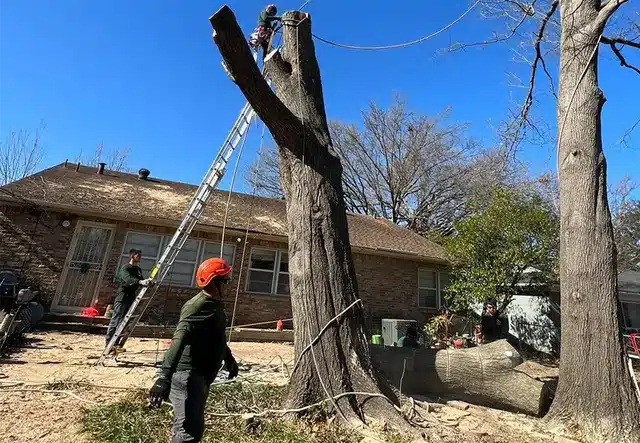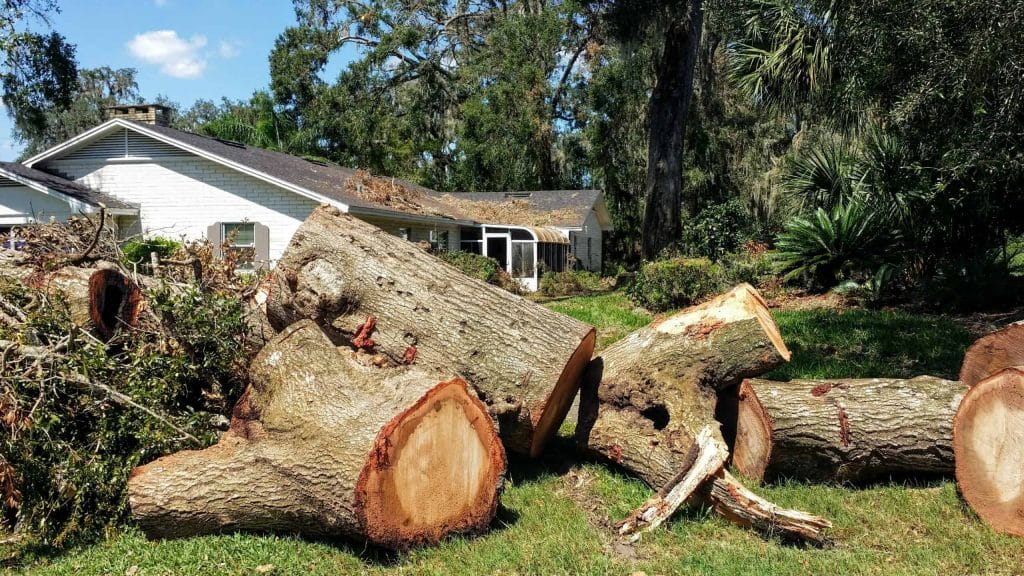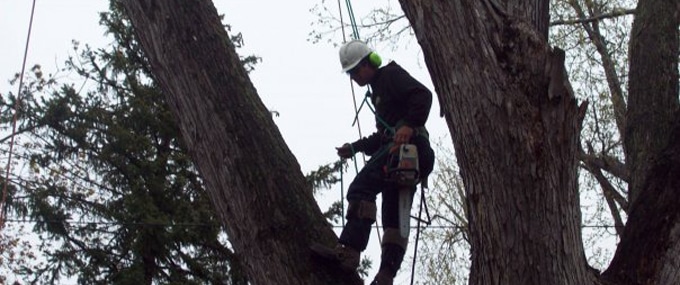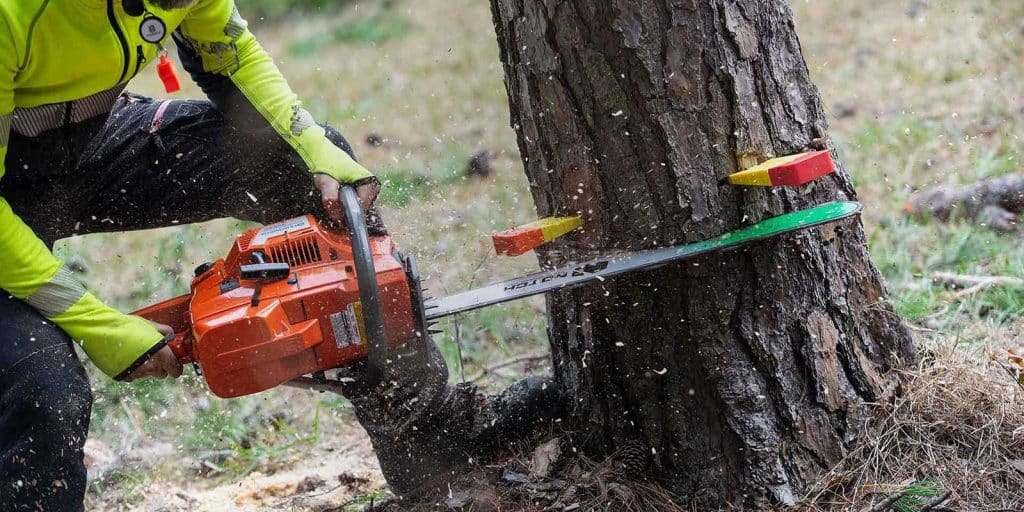Why Prioritising Safe Techniques Matters in Tree Removal
Tree removal is not as simple as it may appear. Yes, it may involve the felling of a tree, but the depth of the process goes much beyond that action.
It requires precise planning, an adept execution strategy, and most importantly, the strict practice of safety measures.
Cutting down a tree without considering the safety aspects can lead to substantial risks that can jeopardise the health and safety of people involved as well as cause damage to surrounding property.
Moreover, unsafe practices can lead to legal issues and cause significant harm to the environment. This article presents a comprehensive analysis of why prioritising safe techniques is crucial during tree removal.
The Risks Involved with Inefficient Tree Removal
Tree removal can be fraught with dangers, especially when inefficient techniques are used. Incidents of accidents are commonplace in this field, and these could result in serious injuries that may have long-term impacts on a person’s wellbeing.
 Falling branches, misjudged cuts, and the mishandling of equipment are just a few examples of how things can go wrong. These injuries can range from minor abrasions to severe cases that require surgical intervention.
Falling branches, misjudged cuts, and the mishandling of equipment are just a few examples of how things can go wrong. These injuries can range from minor abrasions to severe cases that require surgical intervention.
Moreover, inefficient or haphazard tree removal procedures can lead to considerable damage to property. This can include damage to houses, vehicles, and utility lines.
It’s easy to underestimate the sheer weight and impact of a falling tree, causing unexpected destruction. The financial implications of the property damage can be massive, creating an additional burden for property owners.
The legal consequences associated with improper tree removal are also significant. Illegal tree cutting, especially when it involves protected species or breach of regulations regarding boundary trees, can lead to lawsuits, hefty fines or other legal repercussions.
Understanding the Basics of Safe Tree Removal
The foundation of safe tree removal lies in possessing the correct tools and equipment, designed specifically to handle such heavy-duty tasks. This includes utilising chainsaws, stump grinders and wood chippers. It’s important to understand that each equipment has a specific function and must be used correctly to ensure safety.

Pre-removal assessment is another pivotal step in guaranteeing safety. It involves identifying potential hazards such as bee hives, nests or tree diseases, predicting the tree’s fall path and preparing for any unforeseen circumstances.
Crucial to tree removal safety is the knowledge of tree growth and removal insights. Being aware of the characteristics of various tree types, understanding their growth patterns and recognising signs of tree diseases can aid in planning the removal process effectively and safely.
Finally, undertaking formal training and gaining experience in tree removal can be instrumental in enhancing safety. These aspects equip individuals with the skills to identify risks, plan the job meticulously and execute it safely.
Benefits of Prioritising Safety in Tree Removal
The advantages of prioritising safety in tree removal practices are numerous. A key benefit is, of course, preventing harm to people and averting property damage. A safe, well-planned tree removal minimises the chances of accidents, protecting both the person operating and any bystanders.

Compliance with local governing laws also circumvents legal disputes and penalties that can arise from unauthorised or unsafe tree cutting practices. Safety measures ensure that all aspects of tree removal adhere to legislative requirements, promoting regulatory compliance.
Moreover, prioritising safety also helps in preserving the environment and protecting the surrounding trees from unintended damage. As tree removal can disrupt local fauna and flora, a safe removal process mitigates these environmental impacts.
Essential Safety Techniques in Tree Removal
Safe removal techniques begin even before the actual cutting down of a tree. Assessing the stability of the tree and the working area, understanding the tree’s lean and conducting a complete risk assessment are among the initial steps.
Proper cutting techniques, an understanding of proper notch and hinge creation and a mastery of the felling procedure contribute to a safe and efficient tree removal process. For large trees, using ropes, pulley systems or cranes can significantly improve safety by providing better control over tree movement.
Dealing with power lines and other potential obstacles requires extreme caution and meticulous planning. Identifying such possible threats beforehand and taking appropriate measures to mitigate them is an essential part of a safe tree removal process.
Hiring Professional Tree Removal Services: A Safe Option
If all this seems daunting, hiring a professional tree removal service would be the safest and most viable option. Tree removal professionals have the experience, skill, equipment and in-depth understanding necessary for safe and efficient tree removal. They can navigate the challenges, assess the risks and come up with the best action plan for tree removal.
Furthermore, professional tree removal companies usually provide insurance coverage, offering financial protection against any unexpected damages or issues. But when considering hiring a professional tree removal service, factors such as their reputation, qualifications, licensing and provided insurance should be scrutinised to make sure they are a dependable choice.
Conclusion
From the discussion above, it becomes clear that the importance of prioritising safe techniques in tree removal cannot be overstated. Primarily, it protects individuals and property from harm, makes financial sense in the long run and ensures regulatory compliance. Moreover, it also gives consideration to the environment, conserving surrounding trees and habitats.
While a person might be tempted to remove a tree on their own to save some money, the risks involved are substantial. Taking into account the potential repercussions of unsafe tree removal techniques, using professional tree removal services seems to be the most sensible choice.
In conclusion, safety, in all its aspects, should be at the core of any tree removal task as the implications of unsafe methods are too damaging to be ignored.
In this context, arming oneself with the right knowledge and professional help can go a long way in ensuring a safe tree removal process. It’s not just about the tree; it is about valuing life, property, and our precious natural environment.







